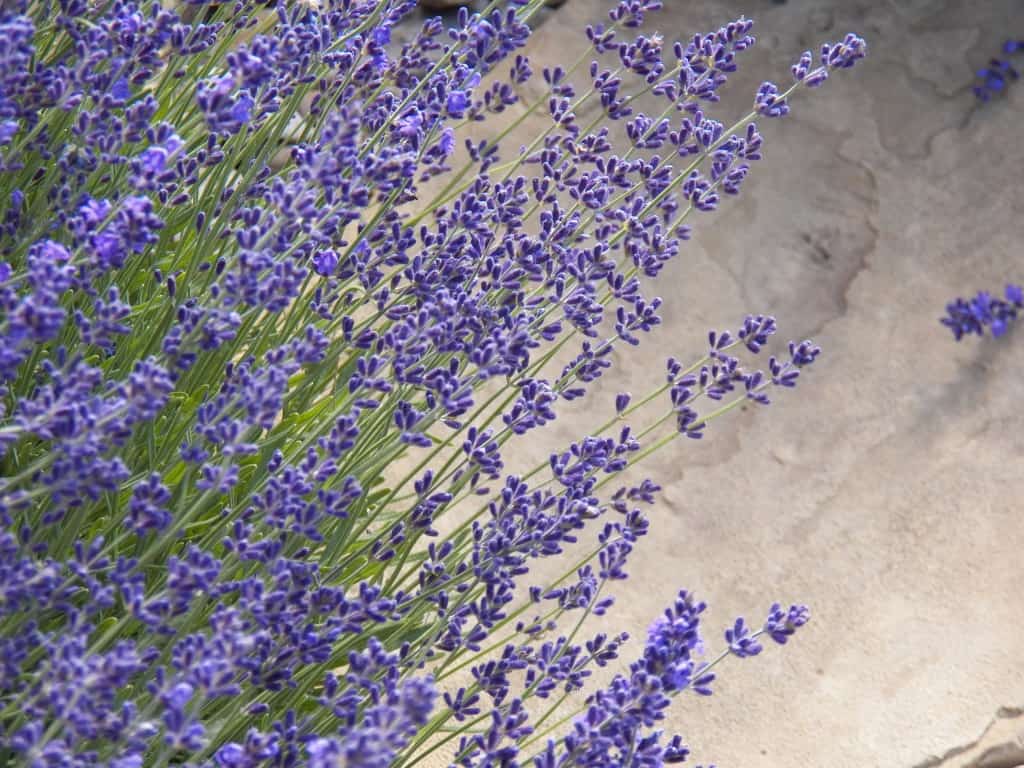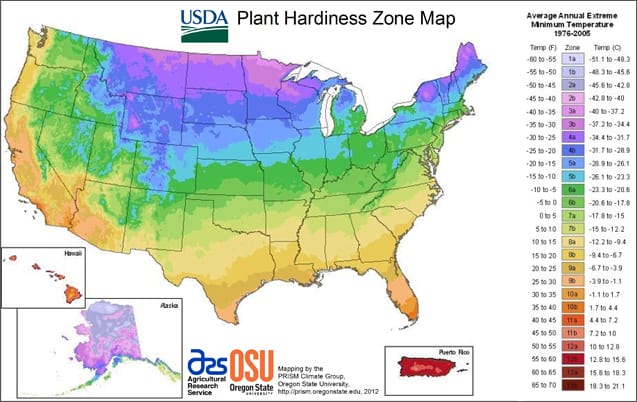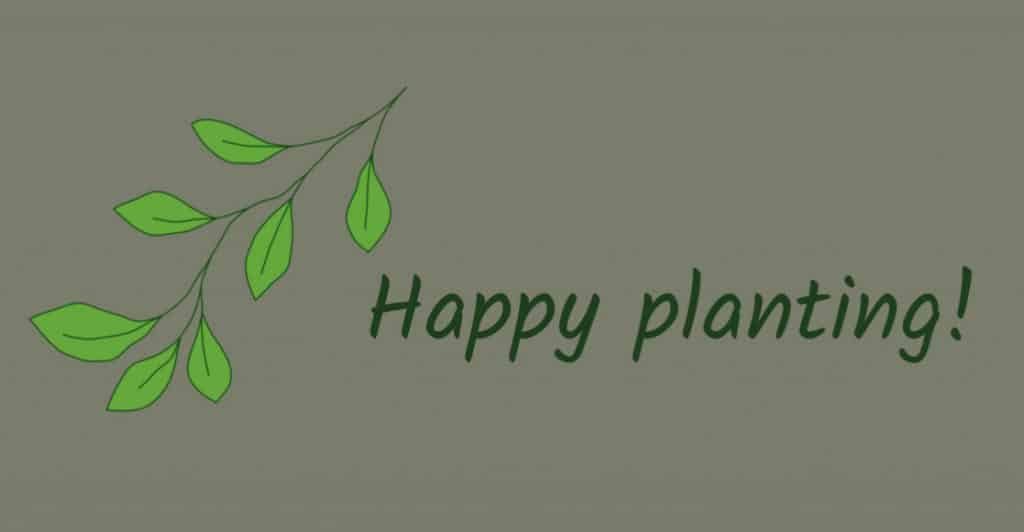Growing lavender in the Great Plains can be rewarding for gardeners. This aromatic plant can be used for a variety of different things, from soaps to jelly. I have grown lavender for years in my own gardens with great success.

Where does lavender grow best?
- It is a Mediterranean plant and likes well-drained soils
- Lavender grows best in full sun
- Plant lavender in dry soils, not heavy clay
Is lavender easy to grow?
Yes, lavender is easy to grow once you have the right conditions. If you do not have a well-drained soil, plant lavender in large containers with a mixture that is 1 part sand to 3 parts soil-free mix
Pick out a container that is at least 16 inches in diameter and 16 inches deep. Do not put rock at the bottom of the container, this will NOT improve water flow through the bottom.
What lavender varieties grow best for me?
This depends on the your location. What USDA hardiness Zone do you live in? If you do not know, check out the map here

Once you have discovered your zone, you can pick from the varieties of lavender listed as hardy in your zone. Most lavender varieties are only hardy to Zone 5. The following list include varieties and what zones they are hardy to.

- ‘Buena Vista’ Zones 5-9
- ‘Hidcote’ Zone 5
- ‘Lady’ Zone 5
- ‘Munstead’ Zone 5
- ‘Potpourri White’ Zone 5
- ‘Wee One’ Zone 5
- ‘Grosso’ Zone 5
- ‘Phenomenal’ Zones 5-9
Where can I buy lavender plants?
If you are located between Kansas City and Nebraska City, we at Grimm’s Gardens sell lavender plants in 1 gallon containers. Check out our webstore or garden center locations in Kansas and Nebraska.
If you do not live close to Grimm’s Gardens, check out our webstore for availability.
Does lavender attract pollinators?

Yes, lavender is attractive to a wide variety of pollinators including honeybees. Butterflies and bumblebees also frequent lavender during flowering. Pollinators that are attracted by lavender include:
- Honeybees
- Bumblebees
- Digger bees
- Mason bees
- Butterflies
- Moths
- Wasps
- Parasitoid wasps
- Tachinid flies

How do you plant lavender?
When you buy lavender from a nursery, it usually comes in a 1 gallon container or a quart sized pot. Dig a hole in your flower bed or container that is the same size as the container the lavender plant is in.
Remove the plant from its container by placing your hand with fingers spread open, across the top of the container (at soil level), then turn upside down and pull the container off.
If the plant is well-rooted, very little soil should fall away. With both hands, gently place the whole plant and soil into the hole, with the plant on top.
Gently spread the original soil from the hole back into the hole until the hole is filled and the soil is level with the surrounding ground.
Extra soil should be removed to the compost pile.
Water gently with a watering can or hose on a low-pressure setting. Water your newly planted lavender 1 time per week for the first year after planting, through the growing season (March-November).
What can I do with lavender?
Lavender can be used for a variety of things around the home or in the garden.
- If you planted lavender in containers, place these containers around a deck or patio to help deter mosquitoes and biting flies
- Cut lavender flowers and dry them by hanging upside down in a dark room for a few weeks, then add them to sachets, potpourris, and flower bowls
- Lavender flower petals can be steeped for tea, then turn that tea into jelly
- You can add lavender flower blossoms to muffins, cakes, biscuits, butter, or pies
- Lavender flower blossoms pair well with blueberries in cooking
- Lavender oil can be made from the leaves and stems, then used as a calming agent in salves and gels

Should I deadhead my lavender?
Lavender is an unusual perennial in that it produces a woody stem as it ages. Cut back your lavender once it is done flowering, but shear or cut no more than 1/2 the plant back. This is all the maintenance that your lavender requires.
What Other Plants Can I Plant with My Lavender?
Lavender goes great with a wide variety of dry-soil plants, from perennials to annuals. The following list includes several perennials that like the same soil and light conditions as lavender and are easy to pair with it.
- Yarrow
- Artemesia
- Butterfly milkweed
- Sea Holly
- Spike Blazingstar
- Missouri Evening Primrose
- Tall Sedum
- Rose Verbena
- Ironweed ‘Iron Butterfly’



